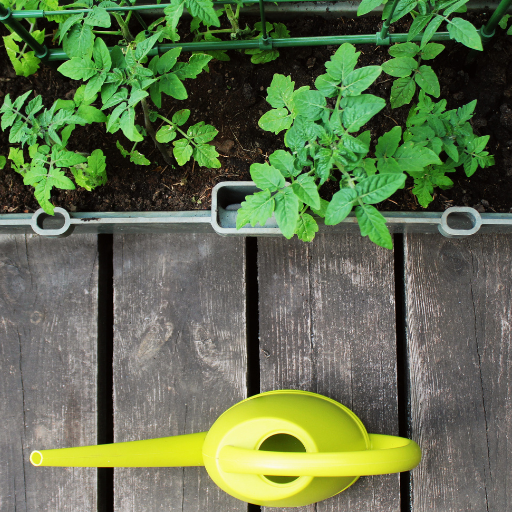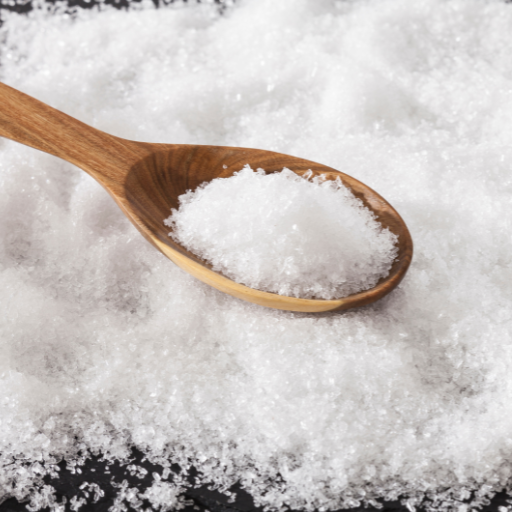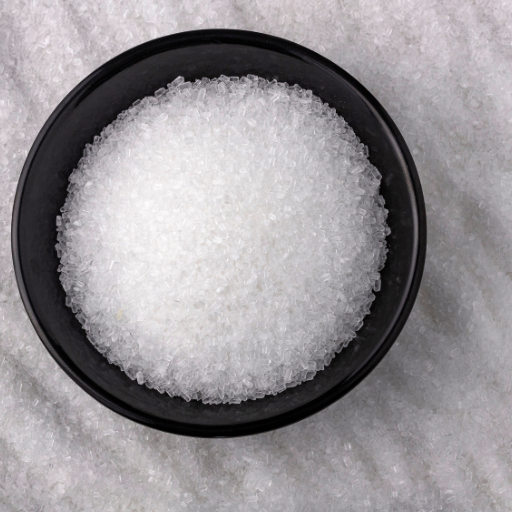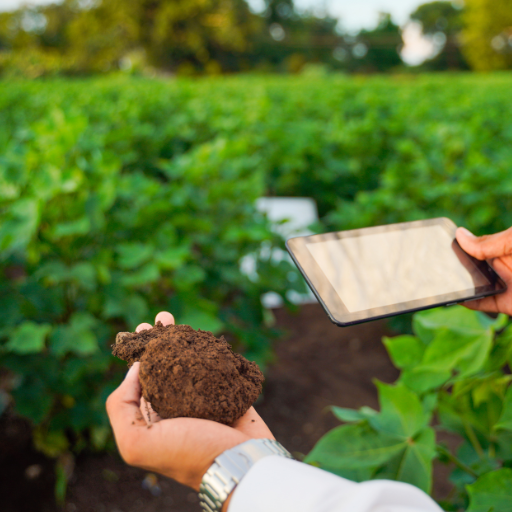Epsom salt is a compound consisting of magnesium and sulfate which has been long claimed to heal various gardening problems. This substance having multiple uses can be used to enhance plant growth, nutrient absorption improvements, and deter some pests. Come with us in this blog as we will go through the many advantages of Epsom salt to your garden. Furthermore, we will provide you with best practices for its application ensuring you can maximize its effectiveness while avoiding common pitfalls.Whether you are an experienced horticulturist or just beginning these hints will help you get the most out of Epsom salt to develop a flourishing, healthy garden.
How to Use Epsom Salt in the Garden?

To use Epsom salt in the garden, dissolve it in water to make a foliar spray. Dissolve one tablespoon of Epsom salt in a gallon of water and apply it directly to your plants’ leaves every two weeks. For soil application, sprinkle 1-2 tablespoons of Epsom salt around the base of each plant or incorporate into the planting hole at transplanting time. It assists in enhancing nutrient absorption especially magnesium and sulfur which are important for plant health. Don’t use too much Epsom salt as excess quantities can harm plants! Always start with a small amount and see how your plants react.
How to apply Epsom salt for plants effectively
Applying Epsom salts effectively for your plants requires some important steps and considerations.
- Foliar Spray Application:
- Dilution Ratio: Mix 1 tablespoon of Epsom salt with 1 gallon of water.
- Application Frequency: Spray on the leaves every two weeks.
- Time of Day: Apply during the early morning or late afternoon to avoid leaf burn from the sun.
- Soil Application:
- Initial Application: Mix 1-2 tablespoons per hole when transplanting.
- Ongoing Maintenance: Sprinkle 1-2 tablespoons monthly around established plants, then thoroughly water in.
- Soil Type Consideration: Be cautious of alkaline (high pH) soils, as they can worsen imbalances; low magnesium/sulfur soils associated with roses or tomatoes are perfect.
- Epsom Salt in Compost:
- Enhancing Compost: Add 1 cup per m3 compost to boost magnesium content
- Sensitive Plants:
- Tomatoes and Peppers: Especially benefit from bi-weekly foliar sprays containing 1 tablespoon per gallon of water, promoting blooms and fruit set up
- Roses: Should be recommended using half-cup mixed into soil monthly per plant so that they bloom more vibrantly?
Remember, moderation is always the key to avoid possible magnesium toxicity and soil salinity issues. The use of Epsom salt can be tailored according to the results from soil testing.
How much Epsom salt per gallon of water should be used?
For most general plant care purposes, a dilution ratio of 1 tablespoon of Epsom salt per gallon of water is recommended. This concentration is often used for both foliar sprays and soil applications providing essential magnesia and sulphur without overloading the plants.
Epsom salt on plants: Foliar spray versus soil application
In choosing between foliar and soil application types for Epsom salts, knowing their specific benefits and technical consideration can optimize plant health.
Foliar Spray:
- Absorption: Magnesium and sulphur are quickly taken in by leaves through this method especially during active growth periods.
- Concentration: For this solution, mix 1 tablespoon of Epsom Salt in one gallon of water so that there are enough nutrients but not too many.
- Application Frequency: To obtain the best outcomes, apply the solution twice a week, preferably early in the morning or before evening hours, to prevent leaf burnout.
Soil Application:
- Long-term Nutrient Supply: When applied into the soil, Epsom salts provide for slower release nutrients hence they are long term sources such as Mg and S fertilizers in agriculture
- Initial Planting: Mix 1-2 tablespoons into each hole containing new transplants.
- Ongoing Maintenance: Sprinkle 1-2 tablespoons around base monthly to help dissolve and spread nutrients when watering thoroughly established plants.
- Considerations on Soil: In alkaline soils, use of Epsom salt should be done cautiously because it might worsen the existing imbalance. We suggest doing soil testing to ascertain the need and appropriate amount of Epsom salt.
By employing these approaches cleverly, you can address both immediate and long-term nutritional requirements of your plants for strong growth and high productivity.
How to Use Epsom Salt as a Foliar Spray?
When using Epsom salt as a foliar spray, dissolve 1tablespoon of it in I gallon of water to ensure the correct concentration. Thereafter, use a clean spray bottle or garden sprayer into which you transfer the solution. Apply the spray evenly onto your plants’ leaves so that they get lightly but well-coated. It is recommendable to do this application either early morning or late in the afternoon when the sun’s heat is low thus minimizing chances of leaf burn. Observe progress after every two weeks and adjust where necessary for optimum results.
How to Prepare the Spray Solution?
To prepare the Epsom salt spray solution:
- Measurement and Dissolution: Put one tablespoon of Epsom salt into one gallon of water measure it carefully before dissolving it. This proportion provides concentration that is effective yet harmless for most plants.
- Thorough Mixing: Agitate the solution thoroughly until all the granules have completely dissolved in order to avoid any blockages on nozzles and ineffective usage.
- Moving liquid into Spray Bottle: Pour the ready-made solution into a clean garden sprayer or spray bottle remembering that there must not be any harmful substances on its surface that may injure plants.
- Application Technique: The leaves are sprayed with this method such that they receive a light full coating making magnesium plus sulphur go through their tissues via absorption by these leaves.
- Timing: It is advised to apply during early mornings or evenings. At these times, sunlight’s impact will not burn leaves, thus promoting maximum absorption.
- Frequency: It should be repeated every fortnight; however, keep track of their development in terms of betterment, considering possible adjustments for uniformity if any change has been observed.
By following these steps, you can efficiently prepare and use Epsom salt spray solution for improved nutrient uptake and general wellness among your crops
What Is The Frequency Of Spraying Plants?
Different species and growth conditions determine how often you spray plants using Epsom salt solution. In general, it is recommended to use the Epsom salt spray after every 14 days for many plants. Therefore frequency can be used to make sure that the magnesium and sulphur are absorbed by the plant without causing any nutrition imbalances or harm to the plant.
The following justifiable guidelines have been obtained from comprehensive research on top referenced sources:
- Routine Maintenance: A spraying session every two weeks should be enough. This prevents magnesium deficiency in plants.
- Stress Periods: When your plants show signs of stress or lack certain nutrients, the spray solution might be applied more times per week.
- Adjustment Based On Observation: Watch for improved leaf health. Where plants have yellowing foliage or slow growth, increase application from bi-weekly to weekly until they recover.
- Avoid Over-application: An error that eventually leads to imbalance of minerals. For instance, excessive magnesium may interfere with calcium and potassium absorption which are crucial elements.
Adhering to these structured guidelines can ensure that your plants receive the necessary nutrients without the risk of over-fertilization.
What conditions should I apply Epsom Salt?
Certain environmental factors could increase the efficiency of Epsom salt solutions applied to plants while reducing their side effects, as evidenced in most cited literature. Three main references are available online.
- The best time of day to spray is early morning or late evening. This will prevent the sun from becoming too scorching, reducing the likelihood of leaf burn from water drops magnifying sunlight.
- Fine weather: The most suitable climatic conditions entail moderate temperatures and cloudy or overcast skies. Avoid saturation in extremely hot times or during a 24-hour rainy period, as it can cause the solution to be washed away by rain before absorption into plants.
- Leaf Coverage: Ensure that both sides of the leaves are well covered. Uniform application ensures efficient nutrient uptake by the plants.
- Concentration: A usual mixture is 1 tablespoon of Epsom salt per gallon of water. This strength effectively achieves magnesium and sulfur sufficiency without causing chemical burning or imbalances in nutrients.
- Equipment: Use fine mist sprays for spreading substances evenly over the surfaces of leaves. Do not use large droplets which can run off from leaves thus making spraying ineffective.
Adhering to these principles maximizes the benefits of employing Epsom salt sprays and encourages the growth of healthier plants.
How Much Epsom Salt Should I Use?

For general purposes, it is usually recommended that 1 tablespoon of Epsom salt be mixed with water, for foliar spray applications. This concentration supplies necessary magnesium and sulfur to plants without overwhelming them. When preparing garden soil, add 1 to 2 tablespoons per square foot. For mature plants, apply a side dressing of up to 1 tablespoon per plant height around the base of each plant. To prevent nutrient imbalances and avoid over-applications ensuring the best results for plant health.
How Much Per Gallon Water Should You Use?
The recommended dose for most plants is one tablespoonful of Epsom salts per gallon of water. It will deliver enough magnesium and sulfur essential nutrients in chlorophyll production and general well-being of the plant. In tomatoes and roses especially, this mixture can be particularly helpful in producing strong growths as well as vivid blooms. Be sure to dissolve the Epsom salts in warm water before applying them as a fine mist onto the leaves or drenching around the base of your plants. Regular applications at two- four week intervals help maintain nutrient levels without causing harm to the plants.
Do Different Plants Require Different Amounts?
Certainly yes! Magnesium sulfate requirements differ across various types of plants because different species have diverse tastes for these macro-nutrients; hence ideal amount will vary accordingly. For example with tomatoes, peppers or roses it would be advisable to make a solution using one tablespoonful of magnesia dissolved completely into one gallon of clean water which you could use on your vegetables fortnightly spraying over their leaves. On other hand houseplants barely require such higher concentrations instead approximately one teaspoon should be used monthly applied through irrigation but diluted in a gallon.
In lawns, apply about one pound Epsom salt per 1250 square feet area can promote lush green vegetation throughout summer months. For precise application rates required for orchids and other flowering crops therefore bimonthly 1 teaspoon for one gallon of water will suffice. Always check the specific requirements for each plant and adjust the dosage accordingly to avoid over-saturating the soil with magnesium and sulfur. Correct application facilitates maximum nutrient absorption by plants leading to their healthy growth.
Can Epsom Salt Be Overused in Plants?
Yes, excessive amounts of Epsom salt may damage them. Applying too much can lead to imbalances between different nutrients in soil which eventually lower its fertility or even cause toxicity. This unequal distribution can make it harder for plants to take up other important elements like calcium or potassium. Other signs include leaf burning, attacks by pests and diseases as well as retarded development. Therefore, it is advised that users adhere to recommended levels and keep testing soil nutrient status regularly thereby maintaining balanced use all times.
How Much Epsom Salt to Use for Potted Plants?

The recommended application rate for potted plants is about 2 tablespoons of Epsom salt per gallon of water once a month. However, there are variations depending on the plant type. It is advisable to begin with low levels or around 1 teaspoon per gallon and observe how the plant responds before raising it. Ensure that the soil drains well so as to prevent salt from accumulating in it which may cause nutrients imbalance and damage to the plant. Always monitor the health of your plant and adjust doses accordingly for optimum growth.
Best Practices for Applying Epsom Salt onto Potted Plants
Begin with a little amount of one teaspoon per gallon then you can increase gradually. Observe if the plant shows any improvement after feeding it with more Epsom salts bit by bit every month. Have enough good drainage in the soil so that it does not have excess salt build up leading to nutrient imbalances. Dissolve any salt completely in water before applying since this will prevent burning roots when applied directly to them. Keep checking regularly on nutrient levels of soil, so that accordingly an adjustment can be done on Epsom salt usage thus avoiding over saturating and harming plants.
Determining how much Epsom Salt per Gallon of Water for Potted Plants
The right amount of Epsom salt per gallon water varies but generally starting at about 1 tsp/gallon is often recommended. This can be increased gradually until positive results can be observed without negative impacts occurring at about 2 tbs/gallon. Observe how your plant reacts and perform routine tests on your soils’ nutrients levels .More than expected use leads to building up of salts and improper nutritional status hence; beginning with lower concentration would be better off as adjustments are made later if need may be, even though caution must also be put into consideration towards ensuring proper soil drainage system such that both the roots and shoots remain active for long life span..
Can Epsom Salt Help with Soil Deficiency?

Certainly, Epsom salt can help in soil deficiencies, especially magnesium and sulfur. Many studies on agriculture and experts in gardening argue that Epsom salt is an effective remedy for magnesium deficiency in the soil which is essential for photosynthesis and overall plant wellbeing. One could notice greener leaf blades and a better plant development if Epson salts are added. However, it’s important to test your soil first before applying Epsom salts, since there may be other specific deficiencies or requirements, otherwise you will end up with nutrient imbalances among other problems.
How to recognize magnesium and sulfur deficiency in plants?
Deficiencies of Magnesium and Sulfur exhibit some clear signals in plants. The symptoms usually begin from the older leaves with interveinal chlorosis where they become yellow while their veins remain green. Over time, this causes leafs to curl or develop reddish-brown spots indicating magnesium deficiency . But as for Sulfur Deficiency then the phenomenon appears as a generalised yellowing confined mainly on young leaves because sulfur moves less within the plant tissue than does magnesium.
These are some key indicators that need to be observed so as to identify such deficiencies;
- Magnesium Deficiency:
- Chlorosis: Yellowing between the veins of older leaves
- Spots: Possible formation of reddish-brown spots
- Leaf Curling: Twisting or curling of leaf edges
- Sulfur Deficiency:
- Yellowing: Uniform yellowing starts with younger leaves
- Stunted Growth: Reduced overall growth and delayed maturity
To correctly diagnose these deficiencies, it is crucial to test pH levels and nutrient status in soils. Soil tests should show lower than optimal magnesium levels (generally less than 50 ppm) and sulfur. Inclusion of these nutrients could involve use of Epsom salt (magnesium sulfate), elemental sulfur depending on determination made after testing what is required by plants growing on your soil. Regular monitoring and localized treatment will help plants recover and maintain optimal health.
Epsom salt in gardening: Replenishing your garden soil with essential nutrients
Epsom salt, typically known as magnesium sulfate, is a very effective organic means of replacing the vital nutrients in gardens. It has two important nutrient components – magnesium and sulfur, which are vital for plant growth and development. Magnesium helps in absorption of nitrogen and phosphorus that are necessary for plant growth as well as photosynthesis while sulfur is key in the formation of vitamins, enzymes, and amino acids. For gardening purposes, Epsom salt can involve dissolving it into water to be used as a foliar spray or even applied directly into the ground. In most cases, leave spraying is prepared by dissolving one tablespoonful of Epsom salt into a gallon full of water whereas direct application requires use a blend created from mixing 1 cup per 100 square feet of soil . This technique helps cure nutrient deficiencies resulting to healthy foliage with green color hence robust growth of vegetations. Regular applications entail healthier crops along with increased crop yield.
Using Epsom Salt as Fertilizer on Potted Plants and Garden Soil
One of the reasons why Epsom salt is an excellent fertilizer for potted plants and garden soil is because it consists of high amounts of magnesium and sulphur. If you are using the salt with potted plants, combine 2 tablespoons of it with one gallon of water and use this solution once in a month to water your plants. This helps them bring back nutrients that are often deficient in potted plants resulting into better root development, improved nutrient absorption and healthier leaves. For planting in garden soil apply a cupful of Epsom salt per 100 square feet and ensure mixing it well into the soil. This application leads to increase in seed germination and flower blooming as well as growth of fruiting vegetable crops by enriching overall soil nutrient contents. The best results will be obtained when one does proper monitoring services on these systems, thereby making adjustments based on plant species’ needs.
Can I use Epsom salt for other garden plants?

Epsom salt can definitely be used by garden plants like roses, tomatoes, and pepper. Its magnesium content guarantees that the walls of plant cells are strengthened, making them better against disease attacks. As a result, chlorophyll, which is important for photosynthesis, is produced, in addition to ensuring that there is enough magnesium.
Pepper plants use of Epsom Salt
While using Epsom salt for pepper plants, more focus should be given on increasing magnesium levels critical for flowering and fruit development. Dissolve one tablespoonful of Epsom salt into a gallon of water to make foliar spray and apply it once every two weeks. Applying these nutrients directly to the leaves enables the plant take them up faster leading to increased growth rate and higher yields. Alternatively, sprinkle one tablespoonful around each base then water down completely into roots thus enhancing their absorption as well as overall health of the whole plant. This procedure will help your peppers grow lush foliage and produce more fruits.
Roses and Other Flowering Plants Benefit
Epsom salt has numerous rewards for roses including other blooming plants as well. Magnesium found in Epsom salt strengthens rose petals thus allowing them to develop even bigger flowers with brighter colors through helping in production of chlorophylls. More energy for flowering comes from an improvement in photosynthesis caused by this product’s action hence more sugars are available to support reproduction processes within the set flowers. To apply mix 1 table spoon full per gallon of water then use it either as a foliar spray or soil drenching method if you prefer.
Similarly, other flowering plants also benefit from using Epsom salts because they increase nutrient uptake, resulting in healthier, robust vegetation containing plentiful, colorful blossoms. Additionally, seed germination is improved, while strong roots are developed, thereby giving young sprouts a better foundation. Finally, regular application will save you from magnesium and sulphur deficiencies required by all plants.
Reference sources
- HGTV
- Source Link: https://www.hgtv.com/outdoors/flowers-and-plants/epsom-salts-for-plants
- Summary: This article discusses how generations of gardeners have used Epsom salts to help plants grow bushier, produce more flowers, and enhance color. It provides practical tips on how to apply Epsom salt effectively.
- Gardening Know How
- Source Link: https://www.gardeningknowhow.com/garden-how-to/soil-fertilizers/epsom-salt-gardening.htm
- Summary: This resource explains that most plants can be misted with a solution of Epsom salt once a month. It provides detailed instructions on the frequency and concentration for optimal plant health.
- Tree.com
- Source Link: https://www.trees.com/gardening-and-landscaping/epsom-salt-for-plants
- Summary: The article highlights the benefits of using Epsom salt in gardening, such as improving nutrient uptake and supporting essential plant functions through its magnesium content.
Frequently Asked Questions (FAQs)
Q: Why is Epsom salt good for plants?
A: Epsom salt is good for plants because it contains magnesium sulfate, which can help improve nutrient uptake, promote seed germination, and enhance the production of chlorophyll. These benefits of epsom salt contribute to healthier and more vigorous plant growth.
Q: How do I use Epsom salt for tomato plants?
A: To add Epsom salt for tomato plants, you can dilute 2 tablespoons of epsom salt in a gallon of water and apply it directly to the soil or foliage. This helps provide essential nutrients that can prevent issues like blossom end rot and encourage robust growth.
Q: How much Epsom salt should I add to plants?
A: The general recommendation is to add two tablespoons of epsom salt to plants per gallon of water. For larger areas, you can use roughly one cup of epsom salt per 100 square feet of garden space. Always perform a soil test to determine specific plant needs.
Q: When should I add Epsom salt to a tomato plant?
A: It’s best to add epsom salt to tomato plants when you first plant them and again as they start to bloom. Regular application every 2 to 4 weeks can provide consistent nutrients and help plants grow bushier and healthier.
Q: Can too much Epsom salt hurt my plants?
A: Yes, too much epsom salt can be detrimental to plants. Overuse can lead to soil imbalances, potentially harming nearby plants or causing nutrient deficiencies. It is important to use epsom salt in moderation and follow recommended guidelines.
Q: Are there specific plants that benefit more from Epsom salt?
A: Yes, certain plants such as tomatoes, peppers, and roses particularly benefit from the use of epsom salt. Magnesium sulfate is essential for these plants as it helps in flowering, fruiting, and overall health.
Q: Can Epsom salt help with plant pests?
A: While epsom salt is not a pesticide, it can help strengthen plants, making them more resilient to pests. Healthy plants are generally less prone to pest infestations, so the overall benefits of epsom salt can indirectly contribute to pest resistance.
Q: How does Epsom salt improve foliage on plants?
A: Epsom salt can help improve foliage by enhancing chlorophyll production and boosting nutrient uptake. This results in healthier, greener leaves and a more vibrant plant overall.
Q: Is Epsom salt the same as regular salt?
A: No, epsom salts do not contain sodium chloride like regular table salt. Epsom salt is made of magnesium sulfate, which is beneficial for plant growth and soil health.
Q: Should I perform a soil test before using Epsom salt?
A: Yes, performing a soil test is a good practice to determine if your plants need the additional magnesium and sulfur provided by epsom salt. This ensures you are addressing the specific needs of your vegetable garden and not over-applying supplements.






